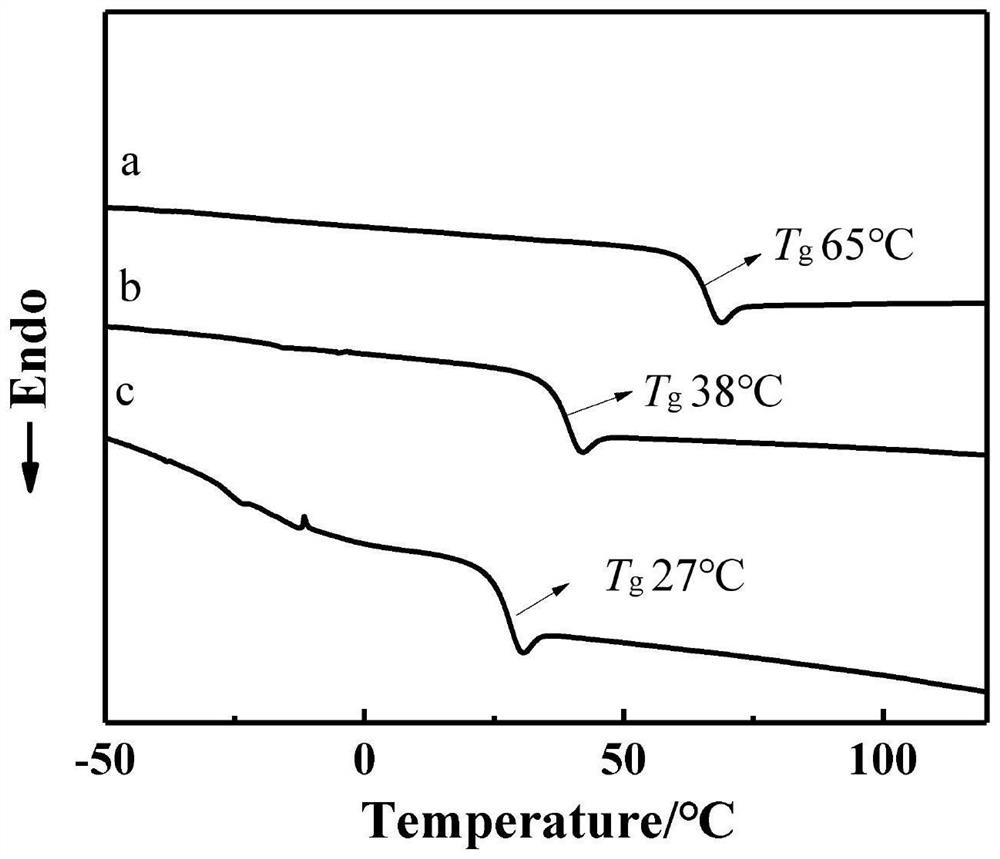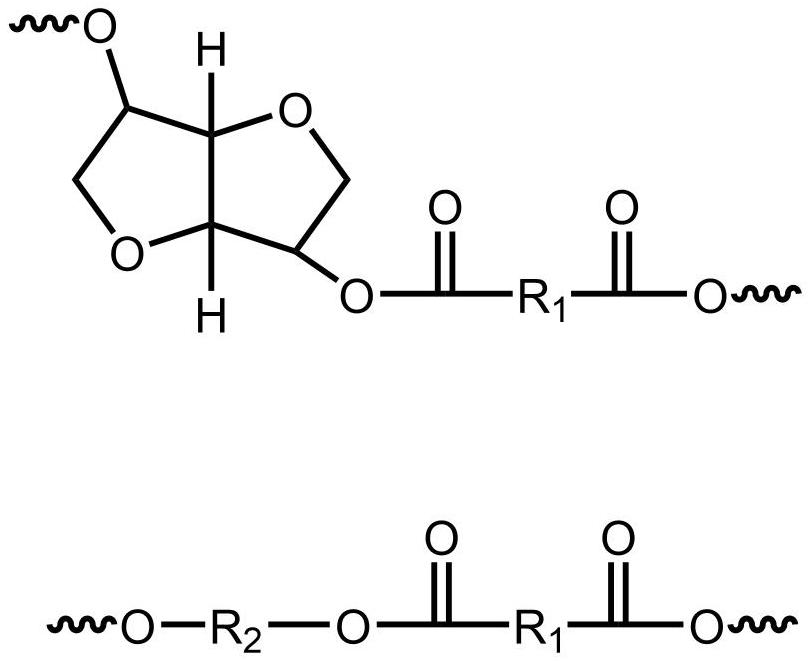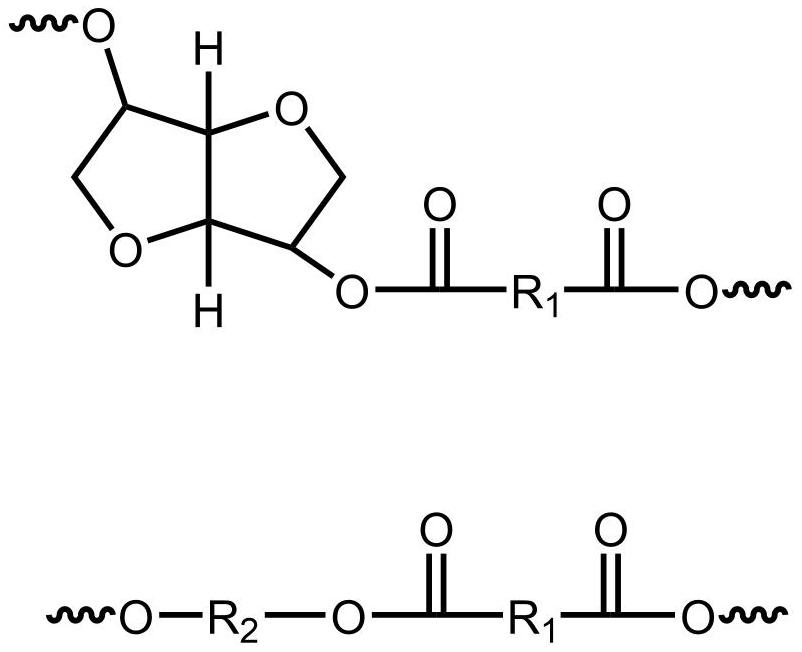Bio-based degradable polyester resin as well as preparation method and application thereof
A technology for degrading polyester and bio-based, applied in application, food science, chewing gum, etc., can solve the problems of difficult to synthesize degradable elastomers, and the types need to be further expanded.
- Summary
- Abstract
- Description
- Claims
- Application Information
AI Technical Summary
Problems solved by technology
Method used
Image
Examples
Embodiment 1
[0039] Get 34.58g of isosorbide, 9.14g of 2,3-butanediol and 36.28g of succinic acid into a 100ml four-neck flask, then heat up to 170°C, 2 Under the reaction, the esterification reaction was carried out for 1h. When it is cooled to room temperature, add 420 μL of 100 g / L tetrabutyl titanate / 1,4-butanediol mixed solution, then raise the temperature to 190°C, and perform esterification for 2 hours to obtain a polyester prepolymer; continue to heat up to 240°C, conduct polycondensation reaction under vacuum for 16 hours, remove water and some small molecules, pass N 2 Cool to 60°C and take out. The resulting bio-based degradable polyester resin contains the following repeating units:
[0040]
Embodiment 2
[0042] Get 25.92g of isosorbide, 15.99g of 2,3-butanediol and 38.10g of succinic acid into a 100ml four-neck flask, then heat up to 170°C, 2 Under the reaction for 1h, carry out the esterification reaction. When it is cooled to room temperature, add 420 μL of 100 g / L tetrabutyl titanate / 1,4-butanediol mixed solution, then raise the temperature to 190°C, and perform esterification for 2 hours to obtain a polyester prepolymer; then raise the temperature to 220°C, react it in a vacuum state for 8h, remove water and some small molecules, pass N 2 Cool to 60°C and take out. The resulting bio-based degradable polyester resin contains the following repeating units:
[0043]
Embodiment 3
[0045] Get 13.50g of isosorbide, 5.73g of ethylene glycol, 17.96g of 2,3-butanediol and 42.8g of succinic acid into a 100ml four-necked flask, then heat up to 150°C, 2 The reaction was carried out for 1 h, and the esterification reaction was carried out. When it was cooled to room temperature, 420 μL of 100 g / L tetrabutyl titanate / 1,4-butanediol mixed solution was added, and the temperature was raised to 190° C., and the esterification reaction was carried out for 2 h to obtain Polyester prepolymer; then raise the temperature to 220°C, react it in a vacuum state for 6h, remove water and some small molecules, pass N 2 Cool to 60°C and take out. The resulting bio-based degradable polyester resin contains the following repeating units:
[0046]
PUM
| Property | Measurement | Unit |
|---|---|---|
| glass transition temperature | aaaaa | aaaaa |
| concentration | aaaaa | aaaaa |
| glass transition temperature | aaaaa | aaaaa |
Abstract
Description
Claims
Application Information
 Login to View More
Login to View More - R&D
- Intellectual Property
- Life Sciences
- Materials
- Tech Scout
- Unparalleled Data Quality
- Higher Quality Content
- 60% Fewer Hallucinations
Browse by: Latest US Patents, China's latest patents, Technical Efficacy Thesaurus, Application Domain, Technology Topic, Popular Technical Reports.
© 2025 PatSnap. All rights reserved.Legal|Privacy policy|Modern Slavery Act Transparency Statement|Sitemap|About US| Contact US: help@patsnap.com



